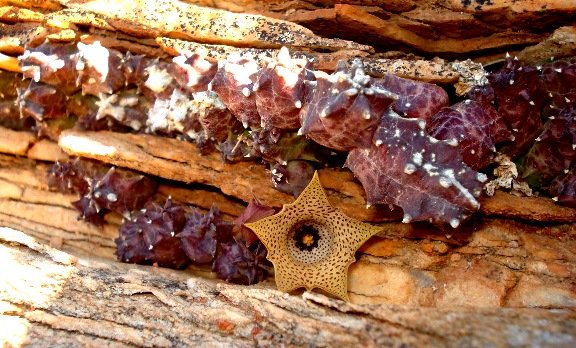Huernia namaquensis

Author: Ivan Lätti
Photographer: Judd Kirkel Welwitch
Huernia namaquensis is a low-growing stem-succulent (sometimes) reaching heights of about 6 cm. The species is found in the Northern Cape and southern Namibia.
Its distribution covers much of the Richtersveld, notably the rocky gorge of the Holgat River, but excluding the arid belt next to the Gariep River. It is also found in Namaqualand as far as Springbok, more towards the coast than inland. A recording as far south as the Van Rhynsdorp district is mentioned in the literature.
The habitat is desert, arid scrubveld and succulent Karoo vegetation where the plants grow in sheltered crevices of quartzite outcrops. The species is not considered to be threatened in its habitat early in the twenty first century. This is in spite of some overgrazing of the terrain and illegal succulent collection.
As the plant is not palatable it is trampling, rather than grazing that damages it, while many collectors don’t need more than a branch, making whole plant removal less common (Williamson, 2010; White and Sloane, 1937; www.redlist.sanbi.org).

